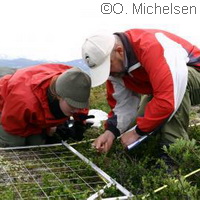Scientists investigate how warming trend impacts mountain plant communities
Environmentalists the world over been investigating and measuring climate change over the years, and they found that the period from 2000 to 2009 was the warmest since they began taking worldwide climate measurements. Although their studies focused on local areas, there is proof that mountain plant communities are changing, and that this is linked to the warming trend. An EU-funded team of researchers recently took this one step further by looking at the problem from a continental perspective. The study, presented in the journal Nature Climate Change, was backed in part by the ENSEMBLE ('Ensemble-based predictions of climate changes and their impacts') project. This EU-funded project received EUR 15 million under the Sustainable development, global change and ecosystems' Thematic area of the Sixth Framework Programme (FP6). Led by the University of Vienna in Austria, this latest study offers us clear and statistically important evidence of a warming effect on mountain plant communities around the globe. Commenting that the results are significant, co-author Ottar Michelsen of the Norwegian University of Science and Technology (NTNU) added: 'You can find studies that have shown an effect locally, and where researchers try to say something more globally, but in this case, when you have so many mountains in so many regions and can show an effect, that's a big thing.' The findings of the study highlight how researchers have measured plant community changes in the mountains across various parts of the world, with about 10 years between the collection of samples. In total, 60 summit sites with 867 vegetation samples from 17 mountain areas across the continent in 2001 were analysed initially. The team revisited the mountain sample sites, including the Dovre region in central Norway, seven years later. The team said they identified a clear shift in the species in the plots towards species that preferred warmer temperatures after they compared the vegetation in the sample plots in 2001 and 2008. They assigned what they called an altitudinal rank to all 764 plant species that formed the sample of their study. According to them, the rank reflects the temperature at which each species has its optimum performance. Since altitude and temperature have a direct correlation in each mountain area (the higher your altitude in the mountains, the colder it will be in general), the location on the mountain where a plant is found reflects its response to the location's actual temperature. They used a mathematical formula to give each plot a 'thermic vegetation indicator', calculated during that seven-year period. The change in the indicator between 2001 and 2008 showed the team whether the mix of plants in each plot had stayed the same or shifted on average to plant types that favoured either colder or warmer temperatures. Data for the 17 mountain areas for 2001 and 2008 were combined, and the researchers obtained a continental-scale view of what other changes, if any, are on the cards. 'The transformation of plant communities on a continental scale within less than a decade can be considered a rapid ecosystem response to ongoing climate warming,' the researchers said. 'Although the signal is not statistically significant for single mountain regions, it is clearly significant when data throughout Europe are pooled.' The results of this study are important for two reasons: 1) the change in plant communities can be detected over time; and 2) plants that have adapted to colder temperatures face greater competition from other species, potentially leading 'to declines or even local disappearance of alpine plant species. In fact, declines of extreme high-altitude species at their lower range margins have recently been observed in the Alps'. Experts from Austria, Brazil, Cyprus, Georgia, Greece, Italy, Norway, Romania, Russia, Slovakia, Spain, Sweden, Switzerland and the United Kingdom contributed to this study.For more information, please visit:Norwegian University of Science and Technology:http://www.ntnu.edu/Nature Climate Change:http://www.nature.com/nclimate/index.html
Countries
Austria, Norway



